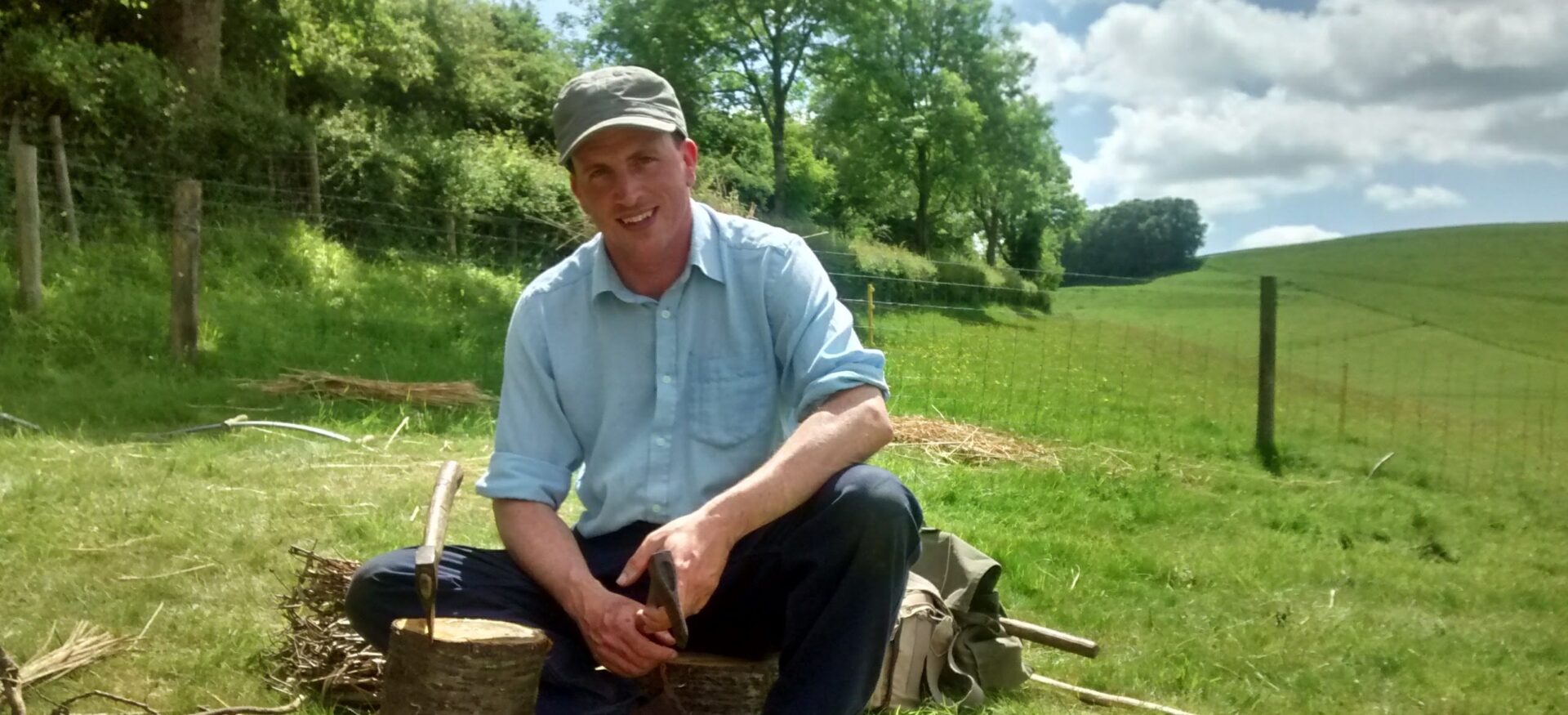Taking up a craft—such as knitting, woodworking, or gardening—restores focal practices, re-connects us with the physical world, and provides the satisfaction of self-reliance. These benefits are good news to a distracted, dissatisfied age, and have fueled a great deal of interest in learning to make things by hand. Archaeologist and historian Alexander Langlands acknowledges these therapeutic values of traditional crafts, but he insists that their true value is much deeper. By studying and practicing traditional crafts, Langlands claims, we can rediscover a lost way of being human in the world.
Cræft, he concludes, refers to a quality of integrated work, wisdom, and even spiritual excellence.
Langlands makes his argument in Cræft: An Inquiry into the Origins and True Meaning of Traditional Crafts (Norton, 2018). His unusual title anticipates the value of the whole book: Langlands takes a thesis that seems familiar (making things is good for us), and enriches it by drawing on several centuries of historical practice. Although the direct ancestor of our modern English craft, the Old English word cræft has a wonderful range of meanings. While craft stops with the idea of “skilled work,” cræft invokes an entire worldview. Drawing on numerous Anglo-Saxon sources, Langlands finds that cræft can refer to physical or mental prowess, as well as to virtue. Cræft, he concludes, refers to a quality of integrated work, wisdom, and even spiritual excellence. It is this integrated wisdom, he argues, which our modern world has lost.
In each of the following thirteen chapters, Langlands explores scything, thatching, hay-making, beekeeping, weaving, ploughing, and other traditional crafts. The origin of each craft, he writes, lies in the essential needs of human life, while its value comes from cultivating a relationship between man and place. The basic techniques and variations of each craft respond to human need, to beauty, and to the resources of a local landscape. Much of Langlands’ experience with these crafts comes from his work as an archaeologist. He also draws on his work with several of BBC’s historic recreation projects, including Tales from the Green Valley (2005) and Victorian Farm (2009). Langlands is an attentive writer who documents his work alongside skilled craftsmen with energy, detail, and humor.
At its heart, Cræft extols the wisdom of living within a landscape well. For the ancient craftsmen, farmers, and housewives Langlands describes, the soil, rock, weather, and creatures of a place were partners in their efforts to create good homes. Langlands’ attraction to such a life, resourceful within the boundaries of its geography, is evident. Each chapter includes at least one example of his efforts to bring scything or skep-making into his own cottage and garden. Although Cræft is “unashamedly an idealist’s book,” Langlands’ idealism should provoke his readers to consider their own landscapes and to test what it might mean to live more creatively within those places.






4 comments
Mark M
I appreciate your review on the ideas and ideals in Cræft. I read your reflections as a constructive response to a recent article that has circulated among some of my friends critiquing convienence as an organizing principle of our lives: https://www.nytimes.com/2018/02/16/opinion/sunday/tyranny-convenience.html. (Gracy Olmstead dialogs with this article here, extolling the virtues of sourdough bread: http://www.theamericanconservative.com/articles/sourdough-bread-and-the-cult-of-convenience/). I anticipate that Cræft, read against this backdrop, will seem less idealistic and even practical.
Bethany Hebbard
Thank you, Mark for these links. I look forward to reading them as part of this ongoing (and important!) conversation on convenience, craft, and the ordering of our lives.
David Naas
Every so often, we get these admonishments for white-collar people to consider working with their hands. “Shopcraft as Soulcraft” being one of the more recent. And the old rabbis thought highly of the idea that one’s study of Talmud would benefit from earning your living in a trade.
Being the son of a carpenter and a seamstress, I was admonished to choose a profession, to go to college, get educated, and not have to work manually. So I went to college, at the end of the ‘60’s, and discovered something. A job which required getting dirty hands was more satisfying than pushing paper (bits and bytes today). So after college, I trained as an electronics and instrument tech, and spend 40 years working around heavy industry, copper mines and electric generation plants.
At night, after washing the greased and grime off, I would sit down with a good book and a pad of paper. And now in retirement, can allege I was happier than many of the poor souls I saw working in offices, especially management. My children, alas, went to University and got the sort of jobs for which a degree is like a union card, essential but not qualifying.
But, for the love of all that’s Holy, don’t treat craft work like a demented “hobby”. If it remains on that level, you will never be aught but a dilettante, ready to abandon your work as soon as something trendier comes along. Love the ground-in dirt, bleeding knuckles, and sprained muscles. Or else.
Bethany Hebbard
I appreciate your thoughts, David. The relationship between a (recreational?) hobby and an (essential?) craft is an important one, and something I think Langlands is hoping to parse by returning to “cræft” over “craft.” I’ve been having somewhat parallel conversations about “community” recently. It’s easy enough to talk about authentic encounters, meaningful friendship, etc., but really linking your life to others (through marriage, membership, and other intentional commitments) is often really miserable! With craft, as with community, desiring the heights means enduring the depths.
At the same time, I wonder about the redemption of hobbies. Langlands writes of his initial skepticism of the “romanticism” of the BBC’s historical recreation projects, but as many young lovers have found, that infatuation can grow into true, clear-eyed, committed, creative love. My own journey into a life of craft (making my own classes, running a small soap business) came first from hobbies. Making in small ways cultivated a greater love. But we definitely need to think more about how to keep people who are attracted to such hobbies from staying in complacent infatuation, instead of taking on the more stern demands of the work.
Comments are closed.